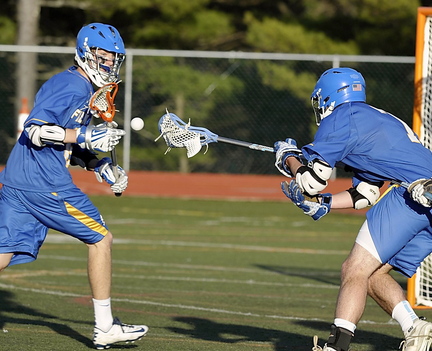WASHINGTON — No one knows how often the youngest athletes suffer concussions. It’s not clear if better headgear is the answer, and it’s not just a risk in football.
A new report reveals big gaps in what is known about the risk of concussion in youth sports, especially for athletes who suit up before high school.
The Institute of Medicine and National Research Council on Wednesday called for a national system to track sports-related concussions and start answering those questions.
Despite a decade of increasing awareness of the seriousness of concussions, the panel found young athletes still face a “culture of resistance” to reporting the injury and staying on the sidelines until it’s healed.
“If an athlete has a torn ACL on the field, you don’t expect him to tape it up and play,” said IOM committee chairman Dr. Robert Graham. “We’re moving in the right direction.”
Recent guidelines make clear that anyone suspected of having a concussion should be taken out of play immediately and not allowed back until cleared by a professional.
Although millions of children and teens play school or community sports, it’s not clear how many suffer concussions, in part because many go undiagnosed.
But Wednesday’s report said among people 19 and younger, 250,000 were treated in emergency rooms for sports- or recreation-related brain injuries in 2009, up from 150,000 in 2001.
Rates vary by sport.
For male athletes in high school and college, concussion rates are highest for football, ice hockey, lacrosse and wrestling. For females, soccer, lacrosse and basketball head the list. Women’s ice hockey has one of the highest reported concussion rates at the college level.
College and high school sports injuries are tracked, but there’s no similar data to know how often younger children get concussions, the IOM panel said.
“One thing that parents question is, ‘Well, should I let my son or daughter play this sport they’re asking me to play?’” said sports injury specialist Dawn Comstock of the University of Colorado. “If we don’t have that type of data on the national level, it’s very difficult” to know.
There’s also little scientific evidence that current sports gear really reduces the risk, the panel cautioned.
“Parents deserve to know how safe their children’s safety equipment really is,” said Sen. Tom Udall, D-N.M., who is pushing legislation to curb false advertising.
The report found that every state except Mississippi has passed a concussion law since 2009.
It’s not always easy to spot a concussion, yet most young athletes play without routine access to a professional trained to check them, the panel said. That can leave the decision to bench players up to coaches and parents.
Typically, youth athletes recover from a concussion within two weeks. But in up to 20 percent of cases, symptoms can persist much longer, the report found. A second blow before full recovery is especially dangerous.
Nor is the concern only physical. The American Academy of Pediatrics said teachers may need to ease students back into learning after a concussion.
Send questions/comments to the editors.



Success. Please wait for the page to reload. If the page does not reload within 5 seconds, please refresh the page.
Enter your email and password to access comments.
Hi, to comment on stories you must . This profile is in addition to your subscription and website login.
Already have a commenting profile? .
Invalid username/password.
Please check your email to confirm and complete your registration.
Only subscribers are eligible to post comments. Please subscribe or login first for digital access. Here’s why.
Use the form below to reset your password. When you've submitted your account email, we will send an email with a reset code.